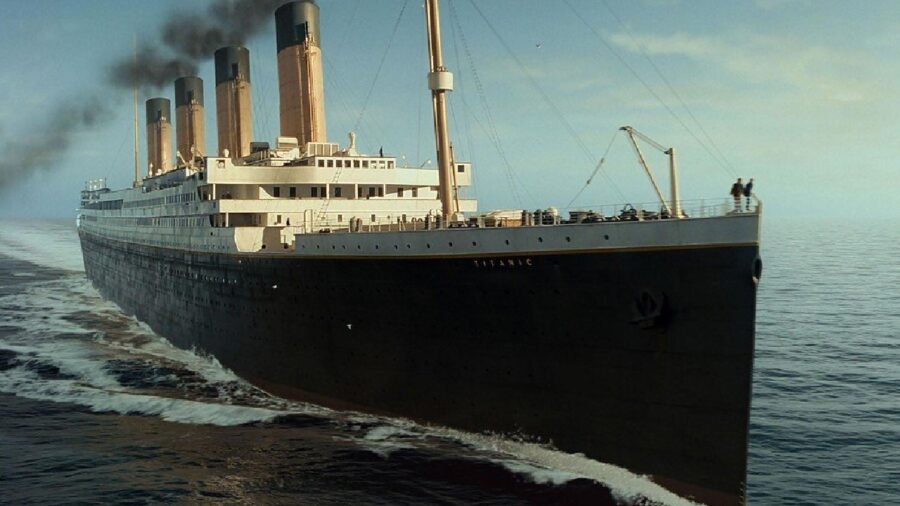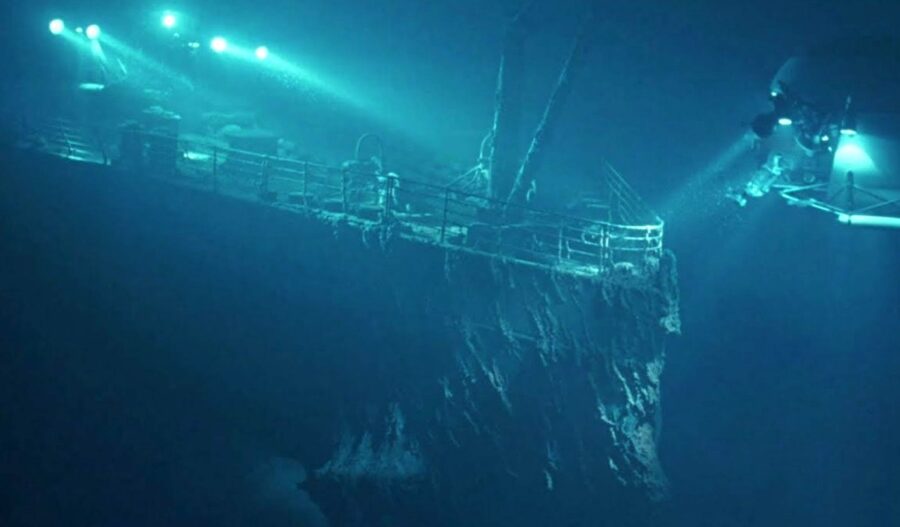New Titanic Images Show Permanent Damage To Iconic Bow

The most recent expedition to the Titanic’s wreckage has revealed massive decay. Conducted by RMS Titanic Inc., the team revealed that a significant portion of the bow’s iconic railing, intact as recently as 2022, had fallen off.
Fans of the movie Titanic may remember the bow’s railing. In a now-famous scene, Leonardo DiCaprio holds Kate Winslet at the waist from behind as she spreads her arms wide, pressing herself against the railing. Looking out over the vast sea, she passionately shouts, “I’m flying, Jack!” quickly embedding the playfully romantic interaction in the minds of audiences across the world.
The Race To Preserve History
In July of this year, RMS Titanic Inc., who own salvage rights to the wreck, discovered that a 15-foot section of the railing now sat on the ocean floor, directly beneath where it had once stood tall. In a statement released on their website, the team expressed their grief.
“We are saddened by this loss and the inevitable decay of the Ship and the debris,” they began. “Although Titanic’s collapse is inevitable, this evidence strengthens our mission to preserve and document what we can before it is too late.”
The Bow Was A Huge Part Of The Movie

The bow’s railing was featured in many famous photos of the wreckage, defiantly and proudly standing tall amidst the rest of the ruins. It was stumbled upon in 1985 along with the rest of the ship’s remains during an unrelated mission to find two nuclear Cold War submarines.
Since then, the site has been visited countless times. Even James Cameron himself, the director of Titanic, made 33 separate dives to the wreck, using the recorded footage within his movie.
Lost To Metal Eating Microbes

The bow’s railing collapse is theorized to be a consequence of environmental exposure. Tiny microbes chomp away at the metal of the ship, forming the rust “icicles” that many photos of the wreckage detail. In combination with the North Atlantic’s high salinity and deep-ocean currents, the railing’s demise was only a matter of time.
Now researchers, as well as the general public, wonder how long the wreckage will last. Will there come a day when nothing remains but its imprint left on the ocean floor? For now, the answer remains unknown.
Rediscovering Titanic Artifacts
In happier news, during this expedition, the team was able to rediscover another iconic part of the ship that had previously been thought to be gone for good. In 1986, a two-foot-tall bronze statue of Diana, the Roman goddess of nature and hunting, was photographed perched upon a fireplace mantle in a well-preserved first-class lounge. However, since that initial sighting, no other expedition has reported seeing the statue and her absence was chalked up to deterioration, which was the case for most of the art the ship originally contained.
Luckily, RMS Titanic Inc.’s “Expedition 2024” caught sight of Diana and quickly proclaimed their excitement. Accompanied by a photo of the statue nestled in debris, they wrote, “Following 112 years on the ocean floor and a brief sighting in 1986, she is still resting upright among miles of debris. Like the eternal Roman deities, she is timeless, and she is rediscovered thanks to Expedition 2024.”
There’s Still More To Learn And More To Save

So, while the discovery of the fallen bow railing was a tragic one, the rediscovery of Diana reminds us just how many secrets lay uncovered in the wreckage, waiting to be brought to light. For those who wish to see footage taken from “Expedition 2024,” short clips were uploaded to the company’s Instagram @rmstitanicinc. For those seeking further information, exclusive access is granted to those who sign up for a membership on their website.
Source: Discover Titanic












